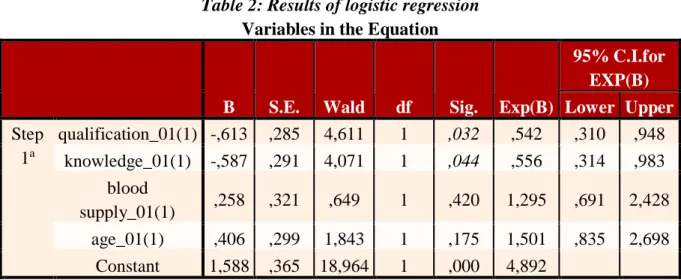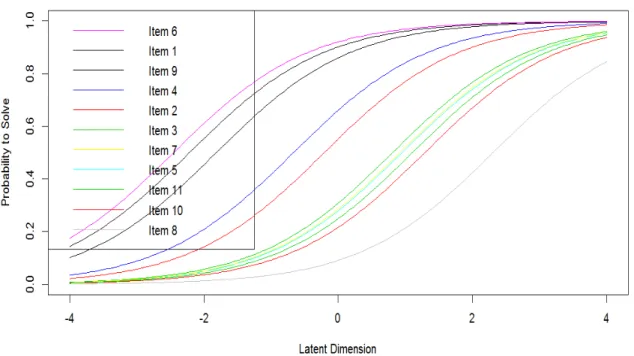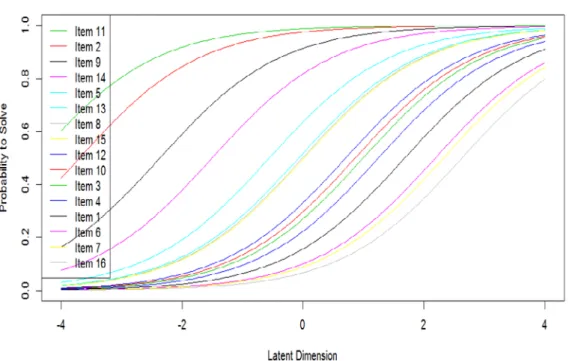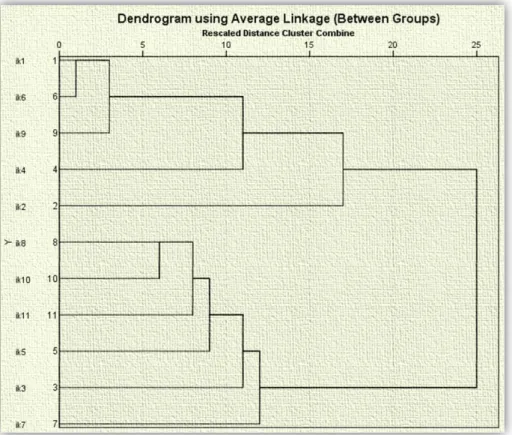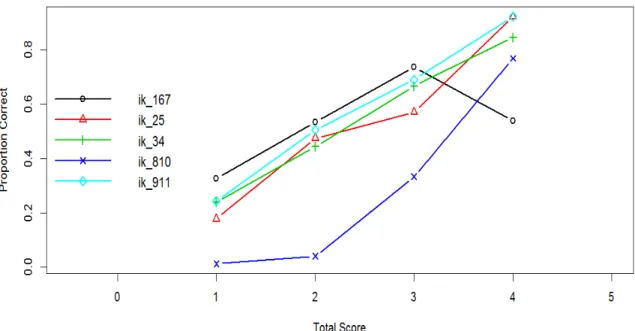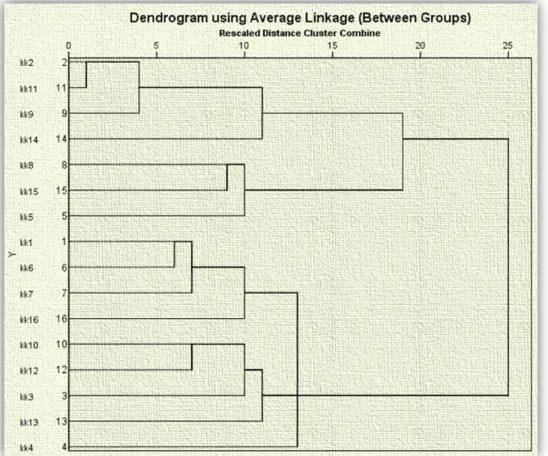The role of nurses in blood safety
Objective measurement of nurses' transfusion-related knowledge with the use of modern test theoretical instruments
(Item Response Theory: IRT)
Doctoral (PhD) Theses
Veronika Rajki
Semmelweis University
Doctoral School of Pathological Sciences
Supervisor: Dr. Judit Mészáros CSc, college professor
Official opponents: Dr. Sándor Nagy PhD, associate professor Dr. Andrea Székely PhD, associate professor
Head of the Final Examination Committee:
Dr. Iván Forgács CSc, professor emeritus Members of the Final Examination Committee:
Dr. Erika Erdősi PhD, college associate professor Dr. Zsuzsanna Soós-Kiss PhD, college associate professor
Budapest
2015
2 Introduction
In this day and age, safe blood transfusions are an immediate, global, and extremely important issue in the field of health care system. As with other areas within the health care system, the field of blood transfusion therapy, likewise, encounters unexpected situations within which dangers may undermine patient safety and security, and destabilize the entire system. Blood quality is directly related to the safety of therapy, product safety, as well as the preparative and clinical transfusiology’ entire process. The principle actors involved with transfusion therapy, namely the nurses, are professionally, legally and ethically responsible for their own conduct. Foreign professional literature mutually affirms that the increasingly important role of nurses involved in transfusion therapy is not only growing but that the nurses’ role is fundamental to the continued maintenance of blood quality and successful therapy. Within the current national context, nurses’ roles and responsibilities should be increased so as to partake and become more involved in the transfusion process. In as such, the nurses’ professional role would include a strong corresponding skill set, willingness to perform, and precise work.
In addition to this, it is important that nurses are not only aware of their own competencies but comply with their competency requirements. The understanding and definition of the competencies are unquestionably a key function of nursing standards. The healthcare system’s expectations do not focus so much on the memorized or written reproduction of knowledge, but rather on the practical knowledge required to address various types of situations, problems and solutions regarding individual patient cases and situations.
The results of training distinct skills – knowledge, practical skills and competencies – are determined by corresponding measurement instruments of those knowledge or proficiency skills.
Although traditional questionnaires and tests provided professionals with a means by which to measure the skill and knowledge sets and levels, by no means do these reflect or provide a clear picture of the ’real’ or practical knowledge and skills needed. For this reason, for the successful teaching of these skills, as well as to know how effective the teaching was, a reliable instrument is required and is possible. Current situations require distinct skills and knowledge sets as an objective, and likewise, reliable measurement (testing)instruments are necessary and possible. The Item Response Theory (IRT) provides a possible solution by addressing and measuring the individual skill competencies required in modern nursing scenarios.
Using a multi-level research approach– our aim was to focus on the measurement of blood donation and transfusion therapy practical errors which occur due to lack of knowledge.
3
The reason for this aim is to outline those ways in which to improve the training of nurses by focusing on the errors and misunderstanding that take place in daily practice.
Based on the reasons stated earlier, two studies were conducted. We first explored four distinct professional groups in Hungary. The first study related to nurses’ knowledge of blood donations as well as their attitudes and habits (preparative transfusiology survey). The second study focused on the measurement of transfusion therapy nurses’ knowledge, competencies. These nurses work in adult transfusion therapy related (inpatient) institutes.
The tests were focused on nurses’ knowledge, job description, and local methods (clinical transfusiology survey). We created and validated a distinct measurement instrument for the latter study (clinical) prior to the national study conducted a few months earlier.
The data gathered in this cross-sectional study involved mathematical statistics and different descriptive methods and was presented in cluster analysis and multidimensional scaling tables in our second survey. We found that the use of these latter methods has not yet been used neither in national nor international literature. For these reasons, we anticipate that the results of this unique study adds to the research field in Hungary.
Procession of the multi-step research process carried out in the nursing care aspects of transfusiology (2011-2015)
Table 1 shows the process of the surveys.
Table 1: Process of the multistage survey (2011-2015) I. Preparation:
- Literature overview in this topic: continuously from the summer of 2011 - Research problem formulation, preparation of the research plan
II. Completing the first part of the survey:
- Survey in preparative transfusiology – in relation to domestic health care workers' knowledge, attitudes, habits regarding blood donation – between July 15, and September 15, 2012 (Nvo=311)
III. Elaboration of the history of blood transfusion: During the year 2013
IV. Completing the second part of the survey:
- Survey in clinical transfusiology – in relation to nurses’ knowledge about transfusion therapy and nursing aspects of transfusion therapy – questionnaire testing and re-testing:
July and August, 2014 (nj=29 and na=27), national survey: between November 19, 2014 and February 20, 2015 (Nto=657)
4 The aim of the dissertation
Research 1: Aims of the survey in the topic of domestic health care professionals' attitudes and knowledge in relation to blood donation
Within the field of preparative transfusiology, it was our aim to measure the knowledge, attitudes and blood donation habits of four professional groups that are involved in blood donation in Hungary – Adult nursing care, Surgical care, Emergency care, Midwifery care. We wanted to find out how, and to what degree, professionals educate and motivate laypersons in regards to blood donations and how these ones vary among the four different professional groups.
Research 2: Aims of the survey in the topic of nurses' knowledge about transfusion therapy and nursing aspects of transfusion therapy
In the field of clinical transfusion, it was our aim to measure nurses’ transfusion therapy knowledge and practical skills through a survey. Our additional goal in the field of transfusion therapy, was to address and measure nurses’ own competencies on a national level. Through comparison and contrast analysis, we aim to uncover the extent to which professionals comply with the existing specifications and requirements outlined in the Transfusion Regulations (2008).
In addition, the national survey was conducted so as to find out whether and to what extent the teaching goals correspond to actual nursing transfusion practice. We sought to exceed the classical test limitations and analyze in detail the nurses’ professional transfusion skills. The objectives of instructors is to promote nurses’ careers and success in the workplace, however, the results provided by traditional questionnaires are questionnable in terms of representation of those skills. Our further goal, thus, was to create a new validated measurement instrument so as to objectivley measure nurses’ knowledge and skillbase.
Methods
Research 1: Survey in the topic of domestic health care professionals' attitudes and knowledge in relation to blood donation
During our first survey the national cross-sectional survey took place between July 15, and September 15, 2012, among health care professionals from the selected four professional groups, with the stratified sampling technique (Nvo=312). Data collection was based on anonymous web-based self-administered questionnaires. The self-administered electronic questionnaire was compiled according to the "Eurobarometer 41.0 (1995): The Europeans and
5
Blood” as well as the "Eurobarometer 72.3 (2010): Blood donations and blood transfusions”
questionnaire which also included our own questions to supplement those mentioned above.
The compiled data was entered into IBM SPSS Statistics (20. and 23.) and Kingsoft Office Spreadsheet (2012) programs. We then used descriptive and mathematical statistical methods for analysis. Univariate and multivariate statistical analysis was applied according to different methods, frequency distribution, mean-value calculation (median and mode), also, a correlation-test analysis, Pearson Chi-square, Cramer V coefficient of significance, and probability ratio calculation were administered. The correlation of professional knowledge and willingness to donate blood were analyzed with regression analysis.
Research 2: Survey in the topic of nurses' knowledge about transfusion therapy and nursing aspects of transfusion therapy
The second survey used descriptive statistics, observation, questionnaires and interview approaches. The self-administered questionnaire was tested according to mathematical and statistical methods so as to establish reliability, validity, variation and standard deviation (SD), Cronbach alpha calculation and Pearson correlation determination coefficients.
Between November 19, 2014 and February 20, 2015, we conducted a representative national study using our own questionnaire. Data collection (paper and anonymous web data) of self-administered questionnaires was conducted within standardized conditions using stratified sampling methods. The test samples or participants (Nto=657) were nurses who worked with adult inpatient transfusion recipients receiving various and regular transfusion therapy. Descriptive statistics were first applied to the cross-sectional study data followed by mathematical statistics. In addition, the mathematical statistics were analyzed according to IBM SPSS (20. version) and the Microsoft Office 2013 program using cluster analysis and multidimensional scaling.
The objective measurement of nurses’ skill sets were therefore measured by a validated measurment instrument (the questionnaire). According to regular tests, we could could compare only raw data , but this would not provide an accurate picture of nurses’ true knowledge and skill levels. We tried to eliminated the limitations of classical test by not addressing overall performance but by analyzing and focusing in detail (itemizing) their individual performance. The various aspects of transfusion practice were covered in a quiz that used biarnary (good/bad) scaling. The retrieved data was analyzed according to hierarchical cluster analysis and dichotomous data analysis that was suitable for the one-
6
parameter Rasch model (modern probability, probability test theory, Item Response Theory, IRT method). The data was applied to the SPSS program and the R statistical ltm module.
Results
Research 1: Survey in the topic of domestic health care professionals' attitudes and knowledge in relation to blood donation
The first survey carried out involved 312 health care professional staff of which only 311 responses were entered into the data base for processing. The sample contained 93,6%- women and 6,4%-men. The average age of the respondents was 40 years (SD: 8,94; Median:
39 years, (1973); Mode: 38 years (1974). Two-thirds of the samples were between 31 and 50 years old with 47,9% completing higher level education and 52,1% secondary education. The survey revealed that 21% of the professionals (66 persons) had never given blood, and that 79% (246 persons) have given blood at one time in their lives. Among them 76 persons are regular blood donors. Of the blood donation colleagues (246 persons) nearly 93 indicated that they had given blood within the half-year. The locations where blood donors gave blood were most commonly blood donation centers (123, 50%) and blood tents or mobile blood donation clinics (47, 19,11%). Those who had not given blood (66 persons, 21,22%) indicated that
„other reasons”, „previous rejection at sites” or „lack of time” were their main excuses.
Of groups studied, those who indicated the highest state of health were the Adult nursing care colleagues. We tested the correlation between subjectively indicated health status and blood donation habits, for example, whether those indicated bad health donate blood regularly. In these response from the blood donation Chi-square value was 5,122 with a significance of 0,824 and probability ratio of 0,722. Of those colleagues who do not donate blood, the responses indicated a Chi-square value of 3,636 with a significance of 0,934, and a probability ratio of 0,829. Of all the responses the Chi-square was 7,373, with a significance of 0,598, and a probability ratio of 0,444. Also, the Adult nursing care group indicated the most positive responses concerning their own health status compared to their colleagues.
When asked what motivated participants to donate blood, the responses most often included (131 persons, 42,12%) „because it’s the right thing to do”, or „it’s necessary for operations” (118 persons, 37,9%).
We also studied individual opinions regarding blood transfusion (rejection, authorization) in our first survey. 184 professionals (59,16%) would accept any blood, whereas 9 persons (2,9%) would reject blood in potentially necessary situations.
7
When asked about the required frequency of blood donations, only 85,5% (266 persons) provided the correct answer.
Of the respondents 50,3% (157 persons) knew how often women can give blood per year, whereas only 47,1% (147 persons) knew how often men should give blood per year.
Concerning blood donation age limits, 95,5% persons were knowledgeable regarding the lowest age limit for donating blood, however, only 37,3% knew the highest age limit for blood donations. Among the professionals, the least well known process within the field of blood donation was stem cell apheresis (182 persons, 58,52%), whereas the most well-known area was that of directed blood donation (292 persons, 93,9%).
We created a 26 item true-false statements to assess the professionals’ knowledge of blood donations and its criteria. Overall, the respondents provided 78,89% correct answers with little or no relevant variation between professional groups. Of the respondents 72, 67%
(226 persons) believe they can intervene during blood donation complications, whereas 27,33% (85 persons) believe they cannot.
In terms of self-assessment concerning knowledge of blood donation skills among all these professionals, the following results were compiled: 160 persons (51,3%) good, 98 persons (31,4%) not bad, 26 persons (8,3%) excellent, 20 persons (6,4%) weak, whereas, in total, 8 persons (2,6%) did not know how to assess their knowledge level. A chi-square evaluation was used to assess the professionals’ self-assessment with the true-false statements results. The results indicated that there no significance between the responses.
In a 1/3-1/3 ratio, we received results indicating that of the professionals studied, (31,9%) had acquaintances who received blood, (35,9%) who had relatives and friends who received blood, and (32,1%), who knew no one personally who had received blood.
Of all the respondents, 92,9% (290 persons) had never received a blood transfusion themselves. Of those professionals involved in transfusion therapy, 32,7% (102 persons) indicated that should they require a transfusion, they would want to know where the blood came from. The largest percentage of respondents who would want to know whom their potential donor would be, were those professionals working in Surgical care group (45 %), whereas, the group least interested in the blood source were those working in Emergency care group (12,5%).
According to the respondents, the blood donors state that receive information from relatives, acquaintances, friends (71 persons, 22,83%), Hungarian Red Cross colleagues (56 persons, 18%), posters (53 persons, 17,04%), or television programs (45 persons, 14,47%).
Surprisingly few (28 persons, 8,68%) think that the source of information comes from a colleague (fellow nurse or staff).
8
204 persons (65,4%) stated ’yes’ to the question whether they had been asked information concerning blood donations. A very high ratio (287 persons, 92%) have, of their own incentive, encouraged laypeople to donate blood. 24 persons (7,7%) have never urged or encouraged anyone to give blood, where was one person did not respond to the question.
280 (90,03%) persons believe blood transfusions to be safer, 29 (9,32%) respondents believe blood transfusions to be as safe as, and 2 persons (0,64%) consider transfusions to be less safe over the last ten years. All three participant groups provided various opinions concerning how much blood is available on a national level.
In the logistic regression analysis we found that the willingness to donate blood is lower among professionals with knowledge below average and less educated colleagues.
According to those colleagues who knew that the domestic blood supply is less than needed, their blood donation willingness is higher; in the case of age, younger ones rather give blood than people over 40. (Table 2)
Table 2: Results of logistic regression Variables in the Equation
B S.E. Wald df Sig. Exp(B)
95% C.I.for EXP(B) Lower Upper Step
1a
qualification_01(1) -,613 ,285 4,611 1 ,032 ,542 ,310 ,948 knowledge_01(1) -,587 ,291 4,071 1 ,044 ,556 ,314 ,983
blood
supply_01(1) ,258 ,321 ,649 1 ,420 1,295 ,691 2,428 age_01(1) ,406 ,299 1,843 1 ,175 1,501 ,835 2,698
Constant 1,588 ,365 18,964 1 ,000 4,892
a. Variable(s) entered on step 1: qualification_01, knowledge_01, blood supply_01, age_01.
Research 2: Survey in the topic of nurses' knowledge about transfusion therapy and nursing aspects of transfusion therapy
In the second survey, the combined questions tested (nj=29 persons) and retested (na=27 persons) provided the following information based on the linear correlation coefficient (Pearson’s correlation coefficient) corresponding to the questions:
• very high correlation, strong dependent relationship (between 0.9 – 1) in 5 questions
• high correlation, marked relationship (between 0.7 - 0.9) in 8 questions
• medium correlation, good relationship (between 0.4 - 0.7) in 3 questions
• negligible correlation, but weak relationship (between 0.2 - 0.4) in 1 question
9
According Cronbach alpha analysis, transfusion knowledge was 0,906 (excellent) according to the questionnaire results and was 0,880 (good) according to the re-test. In terms of transfusion therapy practical and local habit, the Cronbach alpha analysis indicated a value of 0,924 (excellent) in the questionnaire and a result of 0,894 (good) according to the retest.
In reference to nursing practical skills or care functions, the Cronbach alpha analysis indicated a result of 0,969 (excellent) in the survey, and 0,953 (excellent) in the retest.
The time reliability correlation results of the survey largely indicated a strong or significant temporal reliability result, and the between the items there was a very strong and close connection.
The second survey included 657 nurses as participants. The test sample 42,31% (278 persons) did not know how to do blood group serology testing in terms of blood grouping nor removal of blood. 430 persons (65,45%) did not correctly know the limits of temperature for the blood before giving blood to the patient, and 213 persons (32,42%) didn’t know that warmed-blood infusion has to be started immediately. 448 persons (68,19%) did not know the blood sample prior to the transfusion, whereas 444 persons (67,58%) did not know the clinical blood type determination. Except for 83 persons (12,63%) almost the entire sample group (87,36%) lacked knowledge concerning the patient’s condition and corresponding transfusion indicators, aside from their lack of knowledge regarding pre-transfusion blood-group serology testing. 488 persons (74,28%) were misinformed regarding ’biological probe’, whereas 467 persons (71,08%) were not informed as to what to do after blood transfusion therapy. Within the transfusion therapy group, those who frequently (daily, weekly, bi-weekly) partook in transfusion therapy, their level of knowledge was 50,53%, whereas those nurses who rarely partook in transfusion therapy (monthly or less) resulted in a knowledge level of 51,66%.
In the nursing functions field there is also a relatively large lack of knowledge among nurses. A majority of nurses completed the following various nursing functions incorrectly:
taking blood (466 persons), giving oxygen (402 persons); infusion connection (427 persons), urine sample for laboratory test (507 persons), EKG preparation (517 persons), injection administration (390 persons), medication (374 persons) and heating blood products (539 persons).
In the area of practical blood transfusion practices, the most problems arise in blood product heating (496 situations 75,5% of the time happens irregularly/incorrectly), the blood product connection (346 situations 75,5%-ban – takes place incorrectly), in addition, it was observed that employee duties and functions were not adequately documented (609 situations – 92,7% – inadequate documentation). The execution of the biological probe was not perfect
10
either; the answers of 252 persons (38,35%) were incorrectly answered regarding nursing practice.
The arrival of blood products on wards are also problematic; in 114 situations (17,35%), regulations are not followed properly. Regarding transfusion therapy, nursing documentation, use and management are not unified or consistent, and in 161 (24,5%) situations, was inappropriately done. Among various institutions there are notable differences found concerning blood transfusion and therapy practices especially in regards to how nursing documentation is utilized and applied, how blood grouping is determined, as well as blood heating procedure and the instruments used to do so.
The survey indicated that 70,32%-participating nurses created his or her own hospital transfusion procedural instructions matching and taking into account the hospital’s system’s transfusion regulations and procedures. 23,9% ward nurses responsible for transfusions work in the wards.
Based on the data gathered by using the Rasch practical model towards the national
’knowledge’ survey, we were able to create a picture of the transfusion therapy connected questions based on the distribution of correct and incorrect answers; moreover, on the odds ratio provided a probable likelihood of the correct and incorrect answers. Based on the practical Rasch model, we created the characteristic curve which reflected the difficulty of individual items. (Figure 1 and Figure 2)
Figure 1: Items’characteristic curve in the case of questions relating to knowledge based on one-parameter Rasch model
11
Figure 2: Items’characteristic curve in the case of nursing competencies-related knowledge based on one-parameter Rasch model
We further found out which questions the participants answered easily, with which they had more difficulty, and, we were able to itemize the various question combinations for which nurses typically had the correct answer.
In regards to transfusion therapy related skills and the questions concerning them, the largest ratio of nurses answered the questions concerning pre-transfusion therapy duties such as clinical AB0- and RhD blood group determination, correctly. They did this using the contributed compulsory patient information statement and consent forms. The most difficult question sets for the participants included those relating to pre-transfusion performance questions and the biological probe. These included the least correct answers. With the help of cluster analysis we were able to isolate two large categories in regards to transfusion therapy related questions upon which we could assess knowledge. (Figure 3)
12
Figure 3: Dendrogram showing the transfusion therapy-related knowledge
The nurses’ answers regarding transfusion therapy indicated a medium performance level. Most of them could answer four, five or possibly six questions correctly out of the eleven questions provided. The ’pre-transfusion performance test plus the biological probe’
question group indicated a 93% ’do not know’ percentage among participants. Considering the entire question group and the answers provided by the nurses, their performance could be considered weak rather than medium level. More than one third of our sample group (39,27%) was unable to answer one correctly from the entire question groups. (Figure 4)
13
Figure 4: Distribution of correct answers per question group depending on the number of correctly answered question groups
The following transfusion therapy nursing competency skills were successful in ratio in that the correct determinations were made concering nursing functions; nursing documentation management, cardinal symptoms measurement (blood pressure, pulse, temperature and breathing), and patient observation. Simultaneously, in relation to these activities, the nurses showed the least problems in terms of nursing functions and therefore these were the easiest items to answer. Overall, of the 16 nursing activities complied into 8 pairs, of the correct answer ratio per item, there was a higher ratio of improperly answered items. The nurses’ performance in terms of determining nursing care activites could be considered poor because they were only able to provide correct responses to 2-3 pairs of items. Only 9 nurses (1,37%) were able to correctly determine all the activity function pairs.
The greatest lack of knowledge observed among the participants was in regards to blood grouping and blood warming procedures. (Figure 5)
14
Figure 5: Distribution of correct answers per activity-pair depending on the number of correctly answered activity-pairs
Using cluster analysis we were able to categorize two large groups in terms of nursing competencies. (Figure 6)
Figure 6: Dendrogram showing the knowledge about determining of nursing functions
15 Conclusions
Research 1: Survey in the topic of domestic health care professionals' attitudes and knowledge in relation to blood donation
The first survey indicated partly significant results and partly non-significant results in terms of relationships; we found internal part distribution concerning the most frequent situations were stochastic or unpredictable in that not every conditional dispersion was similar and the internal conditional distribution was internally scattered.
1. We determined that among study participants belonging to all four groups; blood donation activity was higher than the national average according to that indicated in a 2009 EU international survey which had previously determined it to be at 44%.
2. On the basis of our results, 61,86% of our sample group or 193 persons do or could donate blood at least twice a year.
3. Our professionals generally donate blood in ten distinct places.
4. Of those professionals who have not yet given blood, the majority state possible reasons for not donating; fear of complications was, as we had predicted, never occurred. Rather, the reasons for not donating blood were the following two: previous rejection at a blood donation clinic and lack of time.
5. The motivation stated for giving blood among participants was that ’it is the right thing to do’.
6. We found that potential blood product rejection was in small numbers (23 persons).
We found that the various opinions that existed among the professionals was not important.
7. Among the professionals, the estimated ratio of blood donors did not correspond with how they judged blood safety.
8. Surprisingly few believed that health care workers gave information concerning blood donations, however, according to the survey, 2/3 of the health care workers had already provided information regarding blood donation.
9. The survey revealed that 92% (287 persons) had played a role in urging laypersons to partake in blood donations. The highest percentage of participation in this (100%) were those in Surgical care and Midwifery care, the second of the two had a ratio of approximately 90%.
10. The respondents, on average 86,19% had correct skills and information concerning blood donation.
16
11. Overall, the Emergency care workers performed the best while the Midwifery care group had the weakest performance in blood donations and related knowledge criterion.
12. None of the professional groups, unanimously, knew that with blood donations, complications could occur.
13. In the field of blood donations, the professional groups did not know as much as they had thought they had known in terms of criteria; they had overstated their own knowledge.
14. In the case of qualification level and knowledge there are significant (P<0,05), and in the case of subjectively judged blood supply and ages there are non-significant results.
In the first survey, thus, we achieved all of our objectives.
Certain questions explored knowledge shortcomings on the part of the participants, and in order to overcome these shortcomings, we stress the necessity of additional or supplementary training of healthcare workers in relation to blood donations.
Based on the received results, we recommend calling attention to the need for coordinated cooperation, possibly in terms of the modification of current blood donation, and transfusion therapy training competencies, as well as, the opportunity for the participation of professional staff in improving and increasing blood donation habits and attitudes.
Research 2: Survey in the topic of nurses' knowledge about transfusion therapy and nursing aspects of transfusion therapy
In reference to the results of our second survey, significant differences between institutions were found in terms of transfusion therapy practice and the management of relevant documents concerning nursing duties.
1. Based on a cross-analysis of professional transfusion therapy’s legal and ethical competencies, and data pooled from contingency tables, we found no substantial difference between nurses’ proficiency levels and the frequency of nurses’
participation in transfusion therapy.
2. Approximately ¾ (70,32%) of the institutions follow their own protocol in regards to transfusion therapy.
3. On hospital wards, approximately one fifth (23,9%) of the working nurses are certified in transfusions.
4. Based on obtained results, we found it worrying that transfusion related skills among nurses was lacking (48,905%).
17
5. It is in our opinion that it is equally worrying that the national institutions’ typical practices are irregular or contravene regulations (as was indicated in the pilot study and national survey).
6. The ratio of nurses’ lack of knowledge is unacceptably high (47,7%) as is the organization of nursing duties.
7. It is likewise unacceptable that the Transfusion Policy/Regulations were neither known nor it’s criteria met.
8. With the use of modern testing instruments, objective measurements were realized.
9. Having used probabilistic methods while conducting our research, we have clearly demonstrated significant shortcomings in nurses’ transfusion knowledge.
In regards to the second survey we also realized certain goals.
The solution to the problems uncovered in the nursing profession lies in: increasing nurses’
responsibilities, increasing the degree and the regular monitoring of aspects of transfusion therapy by head nurses, as well as, by increasing the corresponding transfusiology training and providing regular supplementary training to nurses.
18 New findings of the dissertation
1. Our first survey (Nvo=311) obtained generally unsuitable and broad results; however with continued analysis, potentially extremely important information was reveal → the role of health care professionals in determining individuals’ willingness to donate blood.
2. Earlier national surveys concerning blood donation knowledge and habits among health care workers did not occur → we anticipate that this survey and its results have not only filled a gap in the field but provide new relevant information.
3. Our second survey (Nto=657) was basically exploratory, and although there were only 657, but strong, samples, this number is representative of our national scenario of all active nurses. The relatively limited data obtained from online research, however, was carefully and rigorously evaluated and analyzed with the intention of raising awareness.
4. We have confirmed that in regard to nurses’ transfusion therapy evaluations, independent dependent and interdependent nursing competence reports are inconsistent or inharmonious.
5. Earlier national nation-wide studies were likewise not conducted among nurses in regards to transfusion therapy.
6. We initiated an objective knowledge measurement instrument using cluster analysis and multidimensional scaling in research relating to nursing science → the second survey likewise highlighted shortcomings as well as, we hope, provided new relevant information.
7. Using modern test-theory instruments we were able to realize and accomplish objective measurements.
• we could actually determine the concrete knowledge related to transfusion therapy among nurses,
• we could determine the nurses’ abilities,
• we could establish the degree of difficulty of the tasks and questions,
• we were able to create a picture of the transfusion related questions through the distribution of received correct and incorrect answers,
• furthermore, from these, the calculated logit and odds ratio were based on the possibilities of correct-incorrect responses.
19 Author’s publication list
Publications in relation to the dissertation:
1. Rajki V, Deutsch T, Csóka M, Mészáros J. (2015) Modern tesztelméleti eszközök alkalmazása az ápolók transzfúziós ismereteinek objektív mérésében. Orvosi Hetilap, 37:
1497-1508.
2. Rajki V, Csóka M, Deutsch T, Mészáros J. (2015) Ápolók transzfuziológiai ismeretei és kompetenciái egy országos felmérés tükrében. Orvosi Hetilap, 34: 1383-1392.
3. Rajki V, Csóka M, Deutsch T, Mészáros J. (2015) Reliability and validity of a new questionnaire for the assessment of nursing skills and knowledge in relation to transfusion therapy. New Medicine, 2: 71-77.
4. Rajki V, Csóka M, Mészáros J. (2015) Ápolók szakmai ismereteinek és gyakorlatának feltérképezése a transzfúziós terápiát illetően. Megelőző tanulmány: megbízhatóság- és érvényességvizsgálat. Orvosi Hetilap, 9: 366-378.
5. Rajki V, Mészáros J. (2014) Mérföldkövek a transzfuziológia történetében.
Kaleidoscope: Művelődés-Tudomány- és Orvostörténeti folyóirat, 9: 74-89.
6. Rajki V, Hirdi H, Balogh Z, Mészáros J. (2014) Hazai egészségügyi szakdolgozók véradással kapcsolatos attitűdje, véradási szokásai az egyes szakmacsoportokban. Lege Artis Medicinae, 8-9: 439-449.
7. Rajki V, Hirdi H, Mészáros J. (2014) Specifics of the nursing care of patients undergoing skin grafting, particularly the aspects of transfusiology. New Medicine, 2: 67-71.
8. Rajki V, Hirdi H, Balogh Z, Mészáros J. (2014) Hazai egészségügyi szakdolgozók véradással kapcsolatos ismeretei. Nővér, 2: 26-37.
9. Hirdi H, Rajki V, Mészáros J. (2013) The effects of occupational health nurse-initiated education on workers knowledge, attitude and practice regarding blood donation. New Medicine, 4: 132-135.
20 Other publications:
1. Rajki Veronika: A képzés szerepe az ápolás presztízsének alakulásában, egy felmérés tükrében in: Nővér (ISSN 0864-7003.) - 1999. 12. évfolyam 4. szám, p. 27-29.
2. Illyésné Rajki Veronika: Adalékok a laryngectomia műtéten átesett betegek ápolásához in: Nővér (ISSN 0864-7003.) - 2000. 13. évfolyam 1. szám, p. 13-16.
3. Hirdi Henriett Éva, Rajki Veronika, Mészáros Judit dr. prof.: Ápolási modellek a foglalkozás-egészségügyi ellátásban in: Nővér (ISSN 0864-7003.) - 2011. 24. évfolyam 4. szám, p. 35-41.
4. Illésné Seller Judit, Rajki Veronika: Életmód változtatás, mint a szekunder prevenció hatékony eszköze az infarktuson átesett betegek körében – in: Nővér (ISSN 0864-7003.) - 2011. 24. évfolyam 5. szám, p. 22-32.
5. Barta Katalin, Rajki Veronika: Az idősellátás aktualitásai az ápolás aspektusainak tükrében a sárvári Önkormányzati Kórház egyes betegosztályain – in: Nővér (ISSN 0864- 7003.) - 2012. 25. évfolyam 1. szám, p. 17-28.
6. Rajki Veronika, Ujvidéki Ildikó, Mészáros Judit dr. prof: Gyermekkor veseátültetés előtt és után – ápolói szemmel – in: Orvostudományi Értesítő, 2011, 84 (2): 89-93.
7. Rajki Veronika, Ujvidéki Ildikó, Mészáros Judit dr. prof: Gyermekkor veseátültetés előtt és után – szülői szemmel – in: Orvostudományi Értesítő, 2012, 85 (1): 19-24.
8. Rajki V, Hirdi H. (2012) The Possibilities of Occupational Health Nurses in the Distribution of Knowledge about Blood Donation. In: 8th International Conference of PhD Students. (ISBN:978-963-661-994-7), Miskolc
